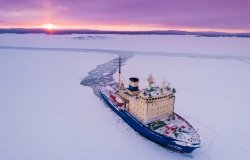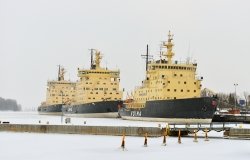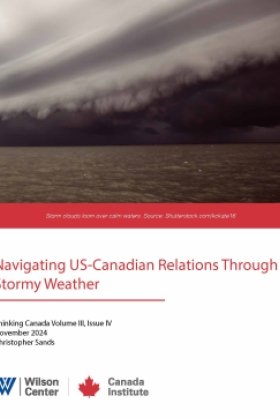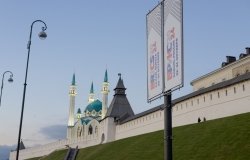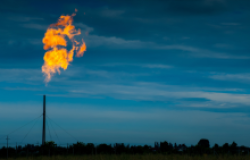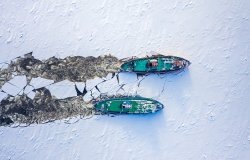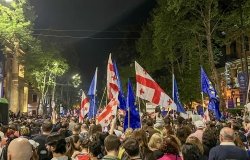Kennan Cable No. 96: Finland and the OSCE: “History Will Not End Here”
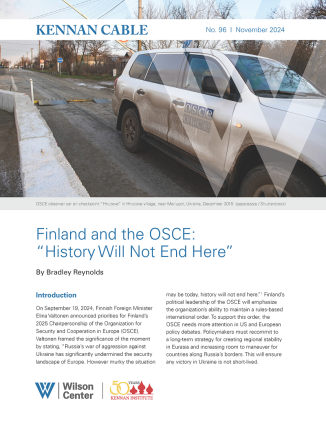

Introduction
On September 19, 2024, Finnish Foreign Minister Elina Valtonen announced priorities for Finland’s 2025 Chairpersonship of the Organization for Security and Cooperation in Europe (OSCE). Valtonen framed the significance of the moment by stating, “Russia's war of aggression against Ukraine has significantly undermined the security landscape of Europe. However murky the situation may be today, history will not end here.”[1] Finland’s political leadership of the OSCE will emphasize the organization’s ability to maintain a rules-based international order. To support this order, the OSCE needs more attention in US and European policy debates. Policymakers must recommit to a long-term strategy for creating regional stability in Eurasia and increasing room to maneuver for countries along Russia's borders. This will ensure any victory in Ukraine is not short-lived.
A Call for Hope and Vision
Foreign Minister Valtonen previously asserted that she would like Finland to be a “lighthouse of hope” for people who thirst for greater freedom and independence—a call to support human rights defenders across Eurasia.[2] A critical commentator might well say, of what use is the OSCE’s focus on human rights and soft security in times of war? We should remember that it was out of crisis that the Conference on Security and Cooperation in Europe (CSCE), the OSCE’s forerunner, and the Helsinki Final Act were born.[3] This allowed human rights, among other issues, to be legitimate topics of discussion in inter- and intra-state relations. Most significantly, it inspired hope for a better future.
Next year, 2025, will mark the 50th anniversary of the Helsinki Final Act and the Helsinki Principles. These principles set ground rules for how sovereign states were to interact with each other and with their citizens. This list included the principles of sovereign equality, refraining from the threat or use of force, inviolability of frontiers, and respect for human rights and fundamental freedoms. Despite its innovative approach to redefining security, President Gerald Ford was reprimanded by Democratic and Republican Congress members and Eastern European constituency groups for signing the agreement.[4] Henry Kissinger famously quipped they could “write it in Swahili” for all he cared, though he eventually reassessed the Final Act’s value in promoting peaceful change.[5]
Soviet leaders thought they had successfully legitimized post-WWII borders, their occupation of the Baltic states, and Soviet authority in the Warsaw Pact. General Secretary Leonid Brezhnev purportedly claimed, “if we achieve Helsinki, we can die in peace.” Eastern bloc dissidents were nonetheless emboldened to challenge state repression. Various historians credit the Helsinki Final Act as a landmark agreement that helped end the Cold War.[6] This interpretation was compounded by the 1990 CSCE Charter of Paris and subsequent institutionalization of the CSCE into the OSCE in December 1994. These agreements furthered post-Cold War ambitions of spreading democratic best practices from Vancouver to Vladivostok.
The 1999 OSCE Istanbul Summit was considered the beginning of stronger Russian critiques of OSCE human rights work.[7] Russian officials began to criticize the OSCE for an overtly “East of Vienna” bias. While this criticism was opposed by OSCE officials and experts, it was agreed that countries east of Vienna did lack a sense of ownership in the institution, which is still something to be addressed today.[8]
In parallel, the OSCE’s budget began to steadily decline after 2000 in both real and nominal terms.[9] Following the 2008 Russian invasion of Georgia, the Corfu Process was launched through the OSCE to rebuild trust—but rather than bridge differences, it highlighted new dividing lines across Europe.[10] Despite the Corfu Process, Russia illegally annexed Crimea in 2014, which was eventually followed by the 2022 full-scale invasion of Ukraine. Participating States now emphasize the OSCE as an institution with, but also despite, Russia. This was a substantial shift from the Corfu Process.
The OSCE has not been perfect. Diplomats termed it an “ongoing evolutionary process towards the vision of a security community.”[11] In 2020, US Under Secretary for Arms Control and International Security, Ambassador Bonnie Jenkins, despaired, “I’m struck that our current lack of imagination is so unlike the spirit of possibility we had.”[12] Hope and vision for a more peaceful future seem like a fool’s errand today.
Despite its difficulties, the OSCE prepared Europe, East and West, to strive for a new peace once the Cold War ended. While permanent peace was not secured, the CSCE, and then OSCE, supported numerous former Warsaw Pact countries and Soviet republics as they worked towards inclusive governance, market economies, and for some, EU and NATO membership. It also retains hope that non-like-minded states develop a “culture of cooperation” with a common self-interest in peace.[13]
In 1947, during a similar period of policy uncertainty and mounting conflict, George Kennan stated in a US National War College lecture: "…perhaps the whole idea of world peace has been a premature, unworkable grandiose form of daydreaming: perhaps we should have held up as our goal: 'peace if possible, and insofar as it affects our interests.'"[14]
Today, European and North American policymakers face a task that will preoccupy a generation—restoring Ukraine’s sovereignty and further integrating Kyiv into a European and transatlantic community. A more difficult and less-debated longer-term objective to succeed in this first task is to consider how to rebuild a bulwark against similar threats in adjacent regions. An even more grand task is considering how to reintegrate Russia into an international community when the moment arrives, a task that was left incomplete by all parties in the 1990s. This requires imagination, hope, and a belief in the spirit of possibility so that peace will be in the interest of a rules-based international order. In this vein, Valtonen reminded her audience that “we need to collectively prepare for” and “double our efforts to forge a better future.”[15]
The OSCE and a Long View of European Security
President Woodrow Wilson often advocated delineating between short- and long-term interests in policy debates.[16] This is a valuable framework, particularly as the war in Ukraine has increasingly required substantial work to produce short-term policy to support its ability to exist as a sovereign state. However, truly addressing the problems posed by Russia’s 2008 invasion of Georgia, as well as the 2014 and 2022 invasions of Ukraine, requires debating longer-term policy towards Eurasia and the variety of tools available in addressing these challenges.
OSCE tools such as the Vienna and Moscow mechanisms, established in 1989 and 1991, respectively, have developed through application over the past three decades. The Vienna mechanism allows participating States to request responses to questions on the human rights situation in another participating State, request bilateral meetings, and notify all participating States of the current situation.[17] The Vienna Mechanism was invoked in 2024 by 41 participating States to raise the issue of political prisoners in Russia, and separately on the same issue in Belarus.[18]
The Moscow Mechanism establishes an ad hoc mission of independent experts to assist in the investigation of a specific human-dimension problem in any participating State.[19] The investigation of violations of international humanitarian and human rights law, war crimes, and crimes against humanity committed in Ukraine after February 24, 2022 was supported by 45 participating States.[20] This is substantial, as before 2022, the Moscow Mechanism was invoked by at most 17 participating States. The Moscow and Vienna mechanisms are often invoked in unison and with the support of civil society actors.[21]
In the 1990s, the Central Intelligence Agency considered the OSCE a better option for developing stability in the South Caucasus and Central Asia, where NATO self-imposed policy limits.[22] Importantly, stability in Eurasia was considered to require a multi-institutional approach and was considered significant for maintaining sustainable security in continental Europe.
In 1994, US Deputy Secretary of State Strobe Talbott argued that the United States needed to invest in its OSCE policy to widen the institutional “‘context’ in which NATO expansion could occur” and make enlargement easier for non-NATO members.[23] This is akin to offering participating States east of Vienna more agency through the OSCE to fortify their security and contest the reemergence of “grey-zones” in areas next to Russia.[24]
Assistant Professor at the European University Institute Veronica Anghel argued that “there is no post-war long-term vision of how transatlantic partners want to deal with Russia.”[25] While updating deterrence and US strategic posture is seen as one long-term policy objective,[26] it does not address the parallel long-term challenge of supporting sovereignty of societies that are not NATO members. Ukraine is a case in point.
The U.S. Helsinki Commission published a 2024 report stating, “we need to be prepared to contest Russia in the long-term,” continuing that it “would be wise to avoid any 1991-style triumphalism a second time around.”[27] Any long-term strategy of contesting Russia needs to include preparations for capitalizing on a new situation. The OSCE is one such institution that facilitates long-term thinking and preparation for change. The OSCE, once considered a “traveling circus” during the Cold War, became a substantially more developed and agile institution in the post-Cold War period.[28]
For example, access to information has become increasingly limited as new dividing lines develop across Europe. One primary added value of the OSCE is its ability to maintain credible information for the international community. Daily reports by the OSCE Special Monitoring Mission to Ukraine from 2014–2022 outlined ceasefire violations, listed weapon systems in places where they should not have been, registered minefields, and documented the impact of the war on the local population. These reports were the foundation for UN action, such as aid deliveries.[29]
Work on economic and environmental issues (termed the OSCE’s second dimension) continues to develop. The Environment and Security (ENVSEC) Initiative, arising from the 2003 OSCE Environmental and Economic Forum, is a joint project with UN agencies to address environmental security risks through regional cooperation among civil society, government agencies, and academia. OSCE partner organizations argue that their work on OSCE second dimension projects contributed to the conceptualization of their peace and climate initiatives in other parts of the world.[30]
The past decade or so highlights how the OSCE has been transforming from a consensus-based institution to an organization able to creatively maintain a coalition of like-minded, as well as non-like-minded, states in pursuit of the Helsinki Principles. Political courage is still needed to maintain the myriad of OSCE projects ranging from election observation to anti-human trafficking. These tools collectively represent a significant contribution to holding the line at a time when Freedom House defines eight of twelve countries in Eurasia as not free.[31]
In Need of a Multi-Institutional Approach
The soft security options of the OSCE, EU, and Council of Europe are founded on the credible deterrence of NATO. As one senior US military official posited, economic sanctions, military strategy, and diplomacy work best in unison. Any one is weakened in the absence of the others.[32] NATO, the EU, and the OSCE need to work in unison and with an understanding of each tool’s purpose, functionality, and geographical scope.
NATO membership for Finland and Sweden is prudent for the region but does not address the long-term policy goal of regional stability outside of the NATO area. It adds to Finland’s already credible national defense, but membership resulted in expanded Russian provocations against Finland. For example, the Russian FSB Border Guard Service began allowing large numbers of migrants without proper documents to enter the border zone and apply for asylum in Finland in fall 2023. This led Finland to shut its eastern border “until further notice.”[33] An environment of enmity between Finland and Russia has developed, not seen in the past 70 years.
In Ukraine, work is being done to move Kyiv in the direction of plausible EU and NATO membership, though this may be a multi-decade process.[34] Like Finland, creating an environment where the border region is not defined by confrontation is the longer-term objective, though it is difficult to conceptualize at the moment.
The South Caucasus and Central Asia represent an additionally difficult, but often overlooked, arena. Countries in these regions continue to watch Russian actions in Ukraine closely as they navigate Russian influence in their own societies.
In August 2024, Armenia froze all participation in the Russian-led Collective Security Treaty Organization (CSTO), though it has not yet completely withdrawn.[35] Azerbaijan continues to hold out on a peace agreement with Armenia, maintaining leverage over the future of regional integration.[36] Georgia was granted EU candidacy status in December 2023, but according to the OSCE Office of Democratic Institutions and Human Rights and European Parliament, “the accession process has been de facto halted by the EU since June 2024 due to democratic backsliding.”[37]
In Central Asia, Russian nationalists are pushing Moscow to “reclaim ‘historic Russian land.’” Bruce Pannier, a longtime RFE/RL correspondent covering Central Asia, argued that Central Asian leaders “publicly tell their people Russia is an ally, a partner, and a friend. The big question now is, does anyone, including the Central Asian leaders, still believe this to be true?”[38] These examples hint at the fragile state of play in both regions resulting from the Russian full-scale invasion of Ukraine.
Kennan considered motivating shared aims among nations as one of the main tasks of US diplomacy. The “cultivation of such solidarity is one of our strongest and most powerful measures short of war,” he said.[39] Creating a diverse coalition from the OSCE’s 57 participating States that will enforce certain conditions for Russia’s return to a European security community will be the first step in winning the peace. This means reaffirming the value of a rules-based system and the Helsinki Principles for all states, not only liberal democracies. The South Caucasus and Central Asia states are important voices in this regard.
Finland 2025—Winning the Peace
Finland, as the OSCE Chair for 2025, is positioned, as a new NATO member and longtime OSCE advocate, to continue building a coalition of participating States that see value in cooperation, despite growing international confrontation. The OSCE has merit as both a fluctuating process and a road map to an envisioned destination.
Former OSCE Senior Advisor Walter Kemp stated, “there is no need to choose between NATO and the OSCE. They play different roles and have different memberships. If enough countries still think it is worthwhile to have a pan-European forum to meet—including with Russia—then the OSCE retains its value.”[40] While this complicates the everyday work of the organization during ongoing war, it retains one of the few channels of communication left. This will be critical, once the war in Ukraine does end, for a multitude of issues, ranging from arms control negotiations to border delimitations across Eurasia.
In this context, the overarching theme for Finland’s 2025 leadership will be resilience—of participating States, societies, and OSCE institutions. Foreign Minister Valtonen outlined that Finnish consultations in Vienna over the past year have shown that there is broad consensus on two issues within the OSCE: adherence to the Helsinki Principles and the need to strengthen the OSCE as well as its autonomous institutions and missions.[41] This reaffirms that the Helsinki Final Act, as well as the 1990 Charter of Paris, are nonnegotiable and immutable.
A regional focus on the South Caucasus and Central Asia will be important for Finland’s leadership. The Finnish government stated in April 2024 that “the growing interest of the Central Asian countries to increase OSCE cooperation should be responded to.”[42] Water diplomacy, border demarcation, and cyber security are all areas these countries have shown interest in further OSCE engagement.
The Finnish term as organization chair will also attempt to revamp civil society participation in national and OSCE politics.[43] Valtonen stated that in 1975, states not only made commitments to each other, but to their people as well. The Finnish Foreign Ministry, for example, after 1975, printed 44,000 copies of the Helsinki Final Act in Finnish for distribution to the public. Toni Sandell, Deputy Head of the Finnish OSCE Task Force for 2025, said that civil society and researchers need to act as a bridge between the past and the future in times of crisis, as they did in 1975.[44]
Today, however, a common refrain among civil society and diplomats has been that the Helsinki Committee model, while important in bringing an end to the Cold War, may not be fit for the current moment or attractive to a post-Cold War generation of civil society activists.[45] This is particularly true for the many states that were (re)born out of the collapse of the Soviet Union and themselves did not have an independent experience working within the CSCE.
A key task not only for the Finns, but for civil society actors in the OSCE area more broadly, will be to conceptualize what type of domestic and transnational cooperation best supports sovereignty, inclusive governance, and a whole-of-society approach to security. In short, to convince a new generation that the OSCE is relevant for their security and future.
History in Waiting
The past 50 years have shown that security is something that must be continually committed to. As the Finnish Ministry of Foreign Affairs likes to say, if the OSCE did not exist, it would need to be built. Former Finnish Ambassador to the CSCE Jaakko Iloniemi reaffirmed this mentality in 2013, stating, “the hope is that even if the OSCE does not live up to our desires today, it still exists and under more auspicious circumstances it might live up to our expectations in the future.”[46]
Though a slow process, an investment in the OSCE is an investment in long-term policy thinking and an investment in hope. A concentrated and creative policy debate is needed for the OSCE to be prepared when a new opportunity arises. Vladimir Kara-Murza issued a call to action in TheWashington Post, saying that “a Europe whole, free, and at peace will only be possible with a peaceful and democratic Russia as a part of it, and this is a roadmap that we need to start preparing today.”[47] Reintegrating Russians into a transnational network of civic minded leaders will be as difficult, if not more so, as integrating Ukraine into a transatlantic security community. When the moment comes, structures and networks must be well prepared to take up both opportunities. As the 1990s showed, this is not a simple task.
The OSCE has traditionally been a community of practitioners, scholars, and activists who are interested in creative policy solutions to a broad set of problems that are influenced by, but largely outside of, NATO’s direct geographical scope. A renaissance in security thinking is needed that effectively applies both soft and hard security options in unison. Today, addressing the challenges that Russia poses to a rules-based order requires multiple tools for multiple regions. Winning the war also requires preparation to win the peace. Reinvesting in the OSCE will help begin debate on what a just and restorative peace for Ukraine will look like and what conditions need to be met for Russia’s postwar atonement and involvement. This is crucial, as Kennan advised, so that peace can be in our best interests.
[1] Elina Valtonen, “Speech outlining 2025 Chairpersonship priorities by Minister of Foreign Affairs of Finland, Elina Valtonen,” Organization for Security and Co-operation in Europe, September 19, 2024, https://www.osce.org/permanent-council/576519.
[2] Matti Poslo, “Suomi haluaa nyt rohkaista vapautta janoavia kansoja” [Finland now wants to encourage nations thirsting for freedom], Turun Sanomat [Turku Post], March 28, 2024, https://www.ts.fi/uutiset/6285429.
[3] The CSCE eventually became the OSCE at the December 1994 CSCE Budapest Summit as part of a string of post-Cold War consensus agreements. This began with the 1990 Charter of Paris, which created institutional structures to support participating States in fulfilling their commitments to the Helsinki Principles.
[4] Sarah Snyder, “Jerry, Don’t Go”: Domestic Opposition to the 1975 Helsinki Final Act,” Journal of American Studies, 44, no. 1 (2010): 67–81.
[5] Jussi Hanhimäki, “‘They Can Write It in Swahili’: Kissinger, the Soviets, and the Helsinki Accords, 1973–75,” Journal of Transatlantic Studies 1, no. 1 (2003): 37–58.
[6] Marie-Pierre Rey, “The USSR and the Helsinki Process, 1969–75: Optimism, Doubt, or Defiance?,” in Vojtech Mastny, Andreas Wenger, and Christian Nünlist (eds.), Origins of the European Security System: The Helsinki Process Revisited, 1965–75 (London: Routledge, 2008); On human rights and the end of the Cold War, see Daniel C. Thomas, The Helsinki Effect: International Norms, Human Rights, and the Demise of Communism (Princeton, NJ: Princeton University Press, 2001); and Sarah B. Snyder, Human Rights Activism and the End of the Cold War: A Transnational History of the Helsinki Network (Cambridge, UK: Cambridge University Press, 2011).
[7] Pál Dunay, “The OSCE in Crisis,” Institute for Security Studies, Chaillot Paper no 88 (April 2006).
[8] Max van der Stoel, “OSCE—Looking Back and Looking Forward,” Helsinki Monitor 16, no. 3 (2005): 204–208; and Andrei Zagorski “Make the OSCE Institutions Less Dependent on Politics, Not More,” Helsinki Monitor 16, no. 3 (2005): 209–213.
[9] Wolfgang Zellner, Identifying the Cutting Edge: The Future Impact of the OSCE, Working Paper 17 (Hamburg, Germany: CORE, 2007), https://finlandabroad.fi/documents/35732/48132/identifying_the_cutting_edge_the_future_impact_of_the_osce.pdf/11cfd951-e482-bce1-1712-4e75e99d9a33?t=1560022069540.
[10] Andrei Zagorski, “The Astana Summit Has Left the OSCE in a State of Limbo,” in IFSH (ed.), OSCE Yearbook 2010 (Baden-Baden, 2011): 32.
[11] CSCE Oral History Project/OSCE Prague Office Archives, CSCE Testimonies: Causes and Consequences of Helsinki Final Act 1972–1989 (Prague, Czechia: OSCE Prague Office, 2013), 7. https://www.osce.org/files/f/documents/6/c/459244.pdf
[12] Bonnie Jenkins, “A Farewell to the Open Skies Treaty, and an Era of Imaginative Thinking,” Brookings, June 16, 2020, https://www.brookings.edu/articles/a-farewell-to-the-open-skies-treaty-and-an-era-of-imaginative-thinking/
[13] Walter Kemp, Security through Cooperation: To the Same End (Routledge: London, 2022), ix–x, 107–108.
[14] Giles D. Harlow and George C. Maerz, Measures Short of War: The George F. Kennan Lectures at the National War College 1946–47 (Washington DC: National War College Press, 1991), 213–214, https://ndupress.ndu.edu/Portals/68/Documents/Books/measures-short-of-war.pdf?ver=2020-06-08-161533-810
[15] Valtonen, “Speech outlining 2025 Chairpersonship priorities,” OSCE, September 19, 2024.
[16] John Milton Cooper Jr., ed., Reconsidering Woodrow Wilson: Progressivism, Internationalism, War, and Peace (Washington DC: Wilson Center Press, 2008).
[17] CSCE, Vienna Mechanism, 1989, https://www.osce.org/files/f/documents/b/6/20064.pdf.
[18] Anna Olsson Vrang, “Invocation of the Vienna Mechanism to Address the Issue of Political Prisoners in the Russian Federation,” Embassy of Sweden, March 22, 2024, https://www.swedenabroad.se/en/embassies/osce/current/news/vienna-mechanism.
[19] CSCE, Moscow Mechanism, 1991, https://www.osce.org/files/f/documents/5/e/20066.pdf.
[20] "Statement by France on the Invocation of the Moscow Mechanism to Address the Human Rights and Humanitarian Impacts of Russia's Invasion and Acts of War against Ukraine," June 2, 2022, delegfrance.org.
[21] Bradley Reynolds and Johanna Ketola, The OSCE and the 21st Century Spirit of Helsinki: Opportunities to Shift Security Back to the People (Finnish Institute of International Affairs, August 2022), 7, https://www.fiia.fi/wp-content/uploads/2022/08/bp346_the-osce-and-a-21st-spirit-of-helsinki_bradley-reynolds-johanna-ketola.pdf; and Helsinki Commission Report, In Brief: The OSCE Moscow Mechanism (Commission on Security and Cooperation in Europe, July 17, 2017), https://www.csce.gov/wp-content/uploads/2017/07/Report-Moscow-Mechanism-FINAL.pdf.
[22] Central Intelligence Agency Geographical Perspectives Division, The Challenge of Ethnic Conflict to National and International Order in the 1990s: Geographic Perspectives: A Conference Report [30 Sep-1 Oct 1993], Doc no. C00123268 (Washington, DC: Library of Congress, 1995), 182–183.
[23] Strobe Talbott, “Memorandum to the Secretary, Dealing with Russia,” US State Department, December 11, 1994, Doc no. C06835880.
[24]Fredrik Lödquist, “The Need for Taking the Strategic Initiative Towards Russia—An Outline for a Policy to Contain, Constrain and Counter Russian Antagonistic Behaviour,” Stockholm Center for Eastern European Studies, SCEEUS Report no. 11, 2024.
[25] Veronica Anghel, “How Wars Don’t End: A Response to Gerard Toal’s Analysis of Ceasefire Negotiations in Ukraine.” Environment and Planning C: Politics and Space (2024).
[26] Jyri Lavikainen, “China as the Second Nuclear Peer of the United States: Implications for Deterrence in Europe, Finnish Institute of International Affairs Briefing Paper No. 383, August 2, 2024, https://www.fiia.fi/wp-content/uploads/2024/02/bp383_china-as-the-second-nuclear-peer-of-the-united-states.pdf.
[27] U.S. Helsinki Commission, “Contesting Russia: Preparing for the Long-Term Russian Threat,” 2024, 3, 5. https://www.csce.gov/publications/contesting-russia-preparing-for-the-long-term-russian-threat/.
[28] Commission on Security and Cooperation in Europe United States Congress, “Phase III and IV (Including Speeches during Phase IV) of the Vienna Review Meetings of the Conference on Security and Cooperation in Europe May 5–July 31, 1987, and September 22–December 18, 1987” (Washington DC: U.S. Government Printing Office, 1988), https://www.csce.gov/wp-content/uploads/2016/07/1987-07-vienna-review-phase-III-and-IV.pdf
[29] Alexander Hug, Ceasefire Monitoring and Verification and the Use of Technology: Insights from Ukraine 2014–2022 (Zurich: CSS ETH Zurich, 2024).
[30] Beatrice Mosello, Spencer Adrian McMurray, Lukas Rüttinger, and Alina Viehoff, “Regional Co-operation Strategy on Climate Change and Security in Central Asia’s High Mountain Areas,” Berlin: adelphi; Vienna: OSCE. For projects outside the OSCE area, see aelphi, “Weathering Risk,” https://weatheringrisk.org/en.
[31] Freedom House, Freedom in the World 2024: The Mounting Damage of Flawed Elections and Armed Conflict, 27,https://freedomhouse.org/sites/default/files/2024-02/FIW_2024_DigitalBooklet.pdf.
[32] Gideon Rachman, “Diplomacy Should Not be a Dirty Word in the Ukraine War,” Financial Times, October 17, 2022, https://www.ft.com/content/6e0a904a-b6e1-482f-9e3f-437531396ebc.
[33] Government of Finland, “Situation at Finland’s Eastern Border,” https://valtioneuvosto.fi/en/situation-at-finlands-eastern-border; and Atle Staalesen, “Chaotic on Finnish Border as Travellers Rush to Cross before Closure,” The Barents Observer, December 15, 2023, https://www.thebarentsobserver.com/borders/chaotic-on-finnish-border-as-travellers-rush-to-cross-before-closure/169457.
[34] Dimitar Bechev, “Can EU Enlargement Work?” Carnegie Endowment for International Peace, June 20, 2024, https://carnegieendowment.org/research/2024/06/can-eu-enlargement-work?lang=en
[35] Armenpress, “Freezing Membership to CSTO is Sufficient at this Moment—PM,” August 31, 2024, https://armenpress.am/en/article/1198725.
[36] Thomas De Waal, “Putin’s Hidden Game in the South Caucasus Azerbaijan’s Rise, Georgia’s Drift, and Russia’s Quest for a Gateway to Iran and the Middle East,” Foreign Affairs, June 3, 2022, https://www.foreignaffairs.com/azerbaijan/putins-hidden-game-south-caucasus?check_logged_in=1.
[37] OSCE Office of Democratic Institutions and Human Rights, “International Election Observation Mission Georgia - Parliamentary Elections, 26 October 2024. Statement of Preliminary Findings and Conclusions,” https://www.osce.org/files/f/documents/3/0/579346.pdf.
[38]Bruce Pannier, “Central Asia Has a Problem, and It Is Russia,” The Times of Central Asia, May 2, 2024, https://timesca.com/central-asia-has-a-problem-and-it-is-russia/.
[39] Giles D. Harlow and George C. Maerz, Measures Short of War: The George F. Kennan Lectures at the National War College 1946–47 (Washington DC: National War College Press, 1991), 12.
[40] Walter Kemp “Crisis and Opportunity for the OSCE,” Security and Human Rights Monitor 4 (2024).
[41] Valtonen, “Speech Outlining 2025 Chairpersonship Priorities,” OSCE, September 19, 2024.
[42] Government of the Republic of Finland, ”Ulko- ja turvallisuuspoliittinen selonteko” [Foreign and security policy whitepaper], Government report, 2024, 33, 52, https://www.eduskunta.fi/FI/vaski/JulkaisuMetatieto/Documents/VNS_3+2024.pdf.
[43] Bradley Reynolds, “OSCE by All—Elevating Civil Society Voices: An Example from Historians without Borders,” Historians without Borders, February 15, 2024, https://historianswithoutborders.fi/en/2024/02/osce-by-all-elevating-civil-society-voices-an-example-from-historians-without-borders.
[44] Toni Sandell, "Toivon majakka—ETYJ ja kansalaisyhteiskunta kotimaassa ja ulkomailla, menneessä ja tulevassa,” Eurooppa-foorumi, August 30, 2024. https://rajucast.tv/en/eurooppa-foorumi/eurooppa-foorumi-perjantai/?trackId=WaXZl5dkvvQyk41uOqOg
[45] Dmitri Makarov, “Another Chance for “Helsinki from Below”? in IFSH (ed.), Reviving OSCE-Related Human Rights Groups, OSCE Insights 7/2021 (Baden-Baden: Nomos, 2022), 147–159.
[46] CSCE Oral History Project/OSCE Prague Office Archives, CSCE Testimonies: Causes and Consequences of Helsinki Final Act 1972–1989 (Prague, Czechia: OSCE Prague Office, 2013), 30. https://www.osce.org/files/f/documents/6/c/459244.pdf.
[47] “Transcript: Press Freedom: A Conversation with Vladimir Kara-Murza,” The Washington Post, August 14, 2024, https://www.washingtonpost.com/washington-post-live/2024/08/14/transcript-press-freedom-conversation-with-vladimir-kara-murza/.
About the Author

Bradley Reynolds
Doctoral Researcher, University of Helsinki
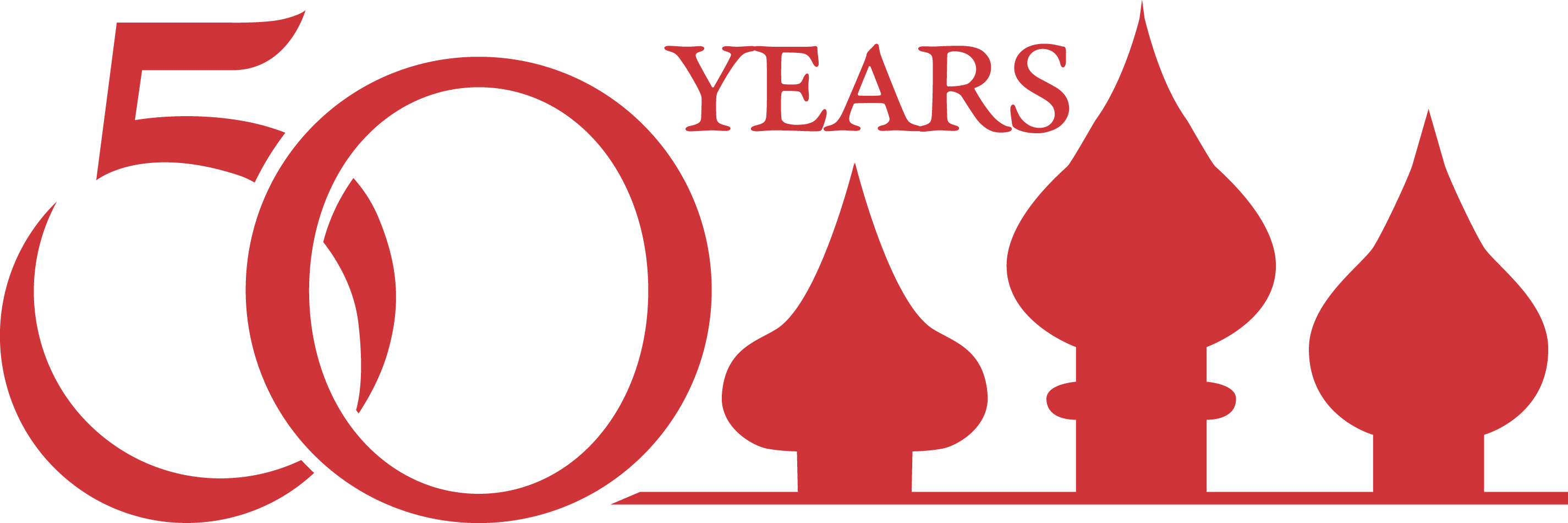
Kennan Institute
The Kennan Institute is the premier US center for advanced research on Eurasia and the oldest and largest regional program at the Woodrow Wilson International Center for Scholars. The Kennan Institute is committed to improving American understanding of Russia, Ukraine, Central Asia, the South Caucasus, and the surrounding region though research and exchange. Read more


